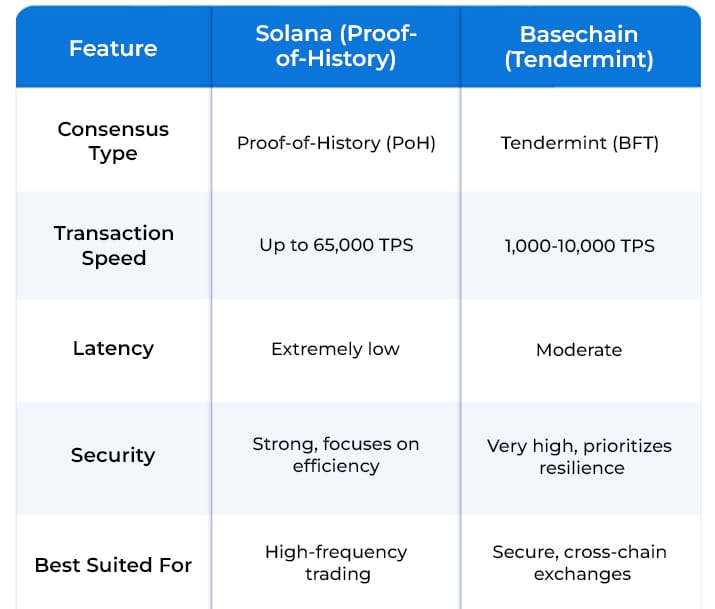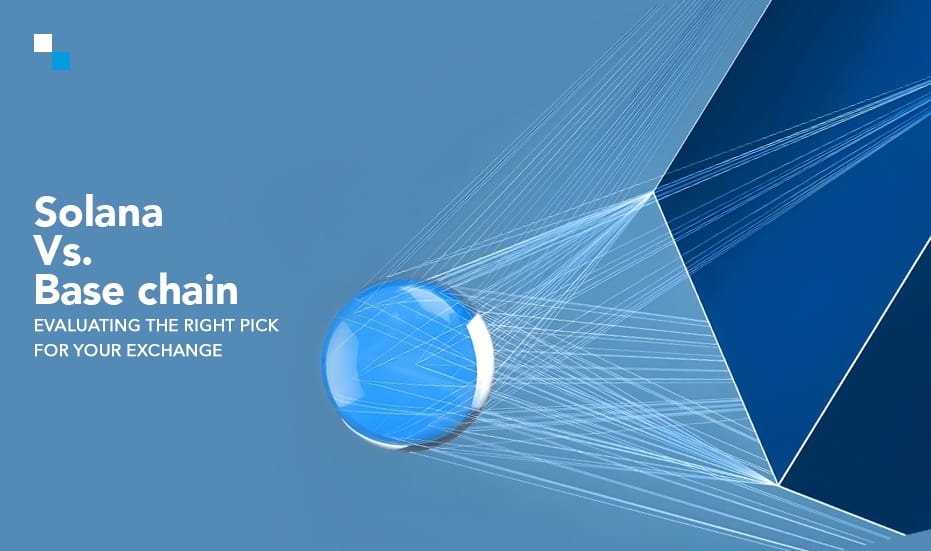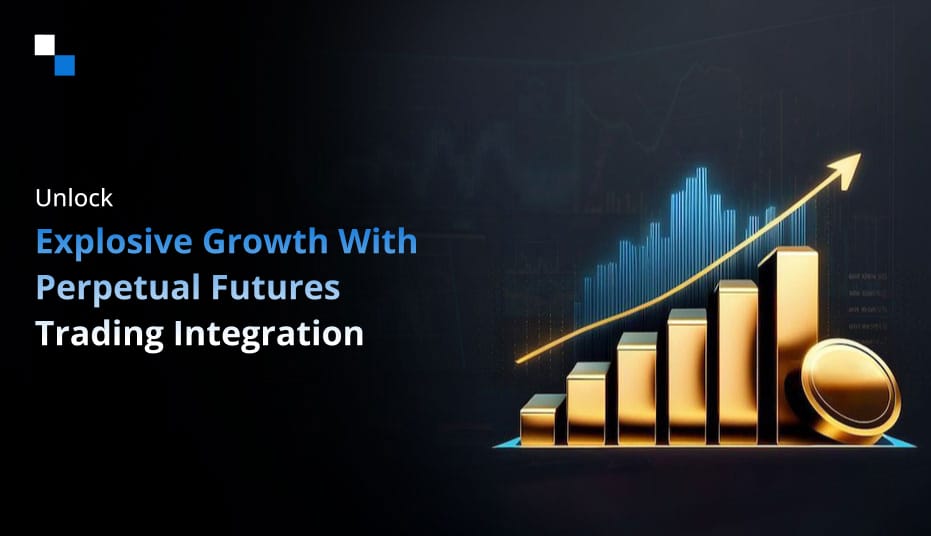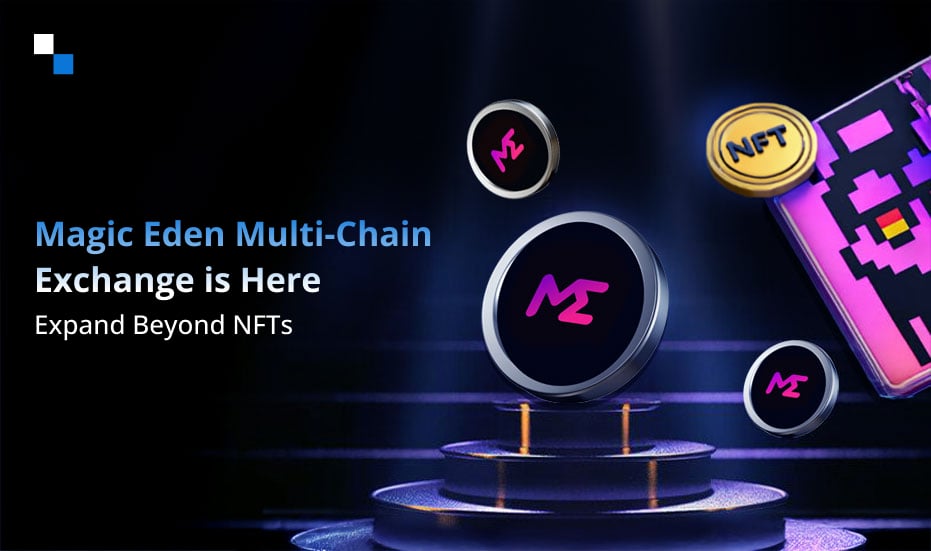
Top 5 Use Cases of Institutional Tokenization Every Investor Should Know
November 11, 2024
Solana Restaking: A Comprehensive Guide to Maximizing Your Returns
November 11, 2024In the world of cryptocurrency exchange development, selecting the right blockchain is like choosing the foundation for a skyscraper—it shapes everything that follows. This decision will have an influence on everything from transaction speed to user experience for developers and entrepreneurs looking to establish high-performance, secure, and scalable exchanges. This is where Solana and Basechain come into play, with each providing a distinct set of benefits that suit various demands in the cryptocurrency exchange software.
Setting the Scene: Solana Or Basechain
Choosing between Solana and Basechain is more than just picking a popular name. It’s about understanding their unique features, benefits, and potential drawbacks. What sets Solana’s lightning-fast transaction speeds apart from Basechain’s strong focus on stability and security? How do their consensus mechanisms impact performance, and what does that mean for your crypto exchange software? Here, we’ll break down the core differences between Solana and Basechain in simple, digestible terms.
What We’ll Explore Next
- Why Blockchain Choice Matters for Crypto Exchange Development
- Architecture Comparison: Solana’s Proof-of-History vs. Basechain’s Tendermint Consensus
- Transaction Speed and Scalability: Handling High-Volume Trades on Solana and Basechain
- Security and Network Stability: Key Features and Protections
- Choosing the Right Blockchain for Your Exchange: Practical Insights
Whether you’re a startup looking for cryptocurrency exchange development services to launch a crypto exchange or a tech enthusiast eager to learn more, this guide will provide clear insights to make an informed decision.
Why Blockchain Choice Matters for Cryptocurrency Exchange Development?
Blockchain selection is critical in cryptocurrency exchange development since it directly affects platform performance, security, scalability, and user experience. In a sector where speed, cost-efficiency, and resilience are critical, the decision between Solana and Basechain can shape the exchange’s operating capabilities and performance.
Cryptocurrency exchanges must manage a large number of transactions effectively, with low latency and expenses. This need necessitates a blockchain that is not just quick, but also extremely scalable and safe. With Solana and Basechain, one can have access to two different architectural models that cater to different needs for cryptocurrency exchange software.
Overview of Solana and Basechain as Emerging Platforms for Exchange Solutions
Both Solana and Basechain offer innovative technologies tailored for high-speed, low-cost transactions, making them ideal candidates for cryptocurrency exchange development services. Solana leverages a unique Proof-of-History (PoH) model to facilitate quick, orderly transactions. This approach makes it a popular choice for real-time trading applications like Solana exchange swap. Meanwhile, Basechain, which operates on the Tendermint consensus algorithm, prioritizes network consistency and cross-chain compatibility, providing a secure and versatile environment for Base Chain exchange operations.
Choosing between these platforms involves understanding their architectures, strengths, and potential trade-offs. Let’s dive deeper into these foundational differences to see how they influence Solana Base Chain exchange development.
Key Factors Influencing Blockchain Choice
Understanding what sets different blockchains apart is vital. When evaluating options like Solana and Basechain, consider these key factors:
Performance and Speed
- Transaction Speed: The faster a blockchain processes transactions, the better. For crypto exchange software dealing with high-frequency trading, latency can make or break user satisfaction.
- Network Congestion: A scalable blockchain must handle peak loads without crashing. Performance-oriented cryptocurrency exchange development relies on a blockchain that can sustain heavy traffic.
Security and Reliability
- Consensus Mechanisms: Your cryptocurrency exchange software should be built on a blockchain with a well-tested and secure consensus protocol.
- Preventive Security Measures: Strong encryption and defense against attacks like double-spending or Sybil attacks are necessary to safeguard the platforms.
Scalability for Growth
- Future-Proofing: Your crypto exchange software needs a blockchain that can evolve and accommodate more users and features over time.
- Modular Scalability: Some blockchains offer modular solutions, allowing you to upgrade components as needed. This flexibility is especially useful when planning the Solana Base Chain exchange.
Crypto Exchange Software Architecture: Solana’s PoF vs. Basechain’s Tendermint Consensus
Understanding how Solana and Basechain’s consensus mechanisms work is essential, as they directly influence the exchange’s transaction speed, reliability, and overall user experience. Each blockchain utilizes a unique model to achieve consensus, which impacts its suitability for cryptocurrency exchange development services.
Solana’s Proof-of-History (PoH) Consensus
Solana’s Proof-of-History (PoH) is an innovative approach designed to timestamp transactions before they are validated. PoH effectively eliminates the need for complex computational work to reach a consensus, by sequencing events and Solana exchange swap in a unique way.
- How it works: PoH functions like a cryptographic clock, creating a historical record that proves each transaction happened at a specific time.
- Advantages: Reduced latency and efficient handling of a large number of transactions per second (TPS).
- Ideal for: A High-frequency cryptocurrency exchange software, where speed and transaction order accuracy are crucial.

Basechain’s Tendermint Consensus Mechanism
Base Chain exchange, on the other hand, employs the Tendermint consensus algorithm, which focuses on security and consistency. By achieving Byzantine Fault Tolerance (BFT), Tendermint ensures that the network can reach consensus even in the presence of faulty nodes, making it a highly secure option for cryptocurrency exchange development.
- How it works: Tendermint uses a combination of voting and staking to validate transactions on the crypto exchange software, ensuring network stability and integrity.
- Advantages: Enhanced security and resilience against attacks, with cross-chain compatibility as an added benefit.
- Ideal for: Applications that require secure, cross-chain interactions, such as a Base Chain Exchange with multiple asset classes.

How Solana and Basechain Handle High-Volume Trades on Crypto Exchange Software?
Transaction speed and scalability are two crucial factors for modern crypto exchanges. Solana Base Chain exchange platforms developed on Solana or Basechain each handle high-volume trades in distinct ways, which can greatly influence the performance of crypto exchange software.
Solana’s High Throughput and Scalability
Thanks to its unique PoH mechanism, Solana excels at managing high-volume transactions with near-instantaneous processing speeds. This makes it suitable for Solana exchange Swap platforms, where order matching and execution need to happen in real-time.
Key Advantages of Solana’s Scalability for Cryptocurrency Exchange Software:
- Efficient Order Matching: Solana’s architecture supports high-frequency trading (HFT), reducing lag and slippage.
- Cost Efficiency: Lower transaction fees, allowing exchanges to offer competitive rates.
- Network Reliability: Consistently high performance, even under heavy load conditions.
Basechain’s Approach to Scalability with Tendermint
While Basechain doesn’t match Solana’s TPS, it prioritizes network stability and scalability through modular design. Base chain is especially valuable for cryptocurrency exchange development services aiming to support cross-chain functionality, allowing seamless transactions across multiple blockchain networks.
Key Advantages of Basechain’s Scalability for Crypto Exchanges:
- Cross-Chain Compatibility: Connects different blockchains, supporting diverse asset types on the exchange.
- Secure Scalability: Balances transaction speed with high security, ideal for sensitive transactions.
- Scalability Solutions: Modular architecture allows for easy scaling by adding new nodes.

Comparing Protection Features for Crypto Exchange Software
Crypto exchanges are targets for cyber-attacks, and both Solana and Basechain offer distinct security measures to mitigate risks.
Security Features of Solana-Based Cryptocurrency Exchange Development:
- Decentralized Validators enhance security, making it resistant to centralized points of failure.
- High Throughput and low Latency reduce the window of exposure to potential attacks.
- Automated Fail-Safes ensure network reliability during heavy load periods.
Security Features of Basechain
- Byzantine Fault Tolerance (BFT): Ensures network stability even if some nodes become malicious.
- Cross-Chain Risk Mitigation minimizes vulnerabilities in cross-chain transactions, adding an extra layer of security for exchanges that support diverse assets.
- Node Consistency with regular node audits and stringent validation rules enhance overall network resilience over Base Chain exchange.

Concluding Words
Solana is highly suitable for exchanges that prioritize speed, especially in high-frequency trading environments. Base chain, with its secure and cross-chain compatibility, is better suited for exchanges that require a stable, diversified trading experience across different blockchains.
Choosing between Solana and Basechain for building your crypto exchange software requires understanding their unique strengths and how they align with the needs of your exchange. For those interested in creating a crypto exchange software that aligns with these needs, Antier is an industry leader in providing cryptocurrency exchange development services. We bring specialized knowledge and tools to ensure your exchange leverages the best of blockchain capabilities, setting the stage for a secure, scalable, and high-performing platform.



